Last Chance to Catch NYC's Holiday Notalgia Train
We met the voices of the NYC subway on our nostalgia ride this weekend!


Saks Fifth Avenue’s flagship in Midtown is widely known as a mecca for fashionistas and trendsetters. In 1924, merchants Horace Saks and Bernard Gimbel opened the high-end department store directly across from Rockefeller Center; it now occupies an entire city block and encompasses ten floors, where cosmetics, shoes and in-store boutiques can all be found.
Its grandeur is only underscored during the winter when Saks celebrates the holiday season by presenting dazzling light shows and windows with extravagant holiday displays. The attraction is not to be missed, but Saks Fifth Avenue is a prominent Midtown fixture year-round. Here are 10 secrets we dug up about its history:

Saks Fifth Avenue occupies 650,000-square-feet, and a good portion of that is taken up by its eighth-floor shoe department. It’s so big that it even has its own zip code 10022-7463 (“SHOE”), as well as a dedicated Tumblr site. “It is a marketing strategy, said Saks’ PR director at the time, Lesley Langsam Kennedy. “We wanted the department to be a destination and that required a ZIP code. It’s the first time anyone has ever been given permission to do something like this.”
Saks Fifth Avenue was the first business to claim a “vanity zip code” in August 2007, when the United States Postal service launched a program to sell zip code extensions to businesses.
Next, read about other buildings with exclusive zip codes in New York City.
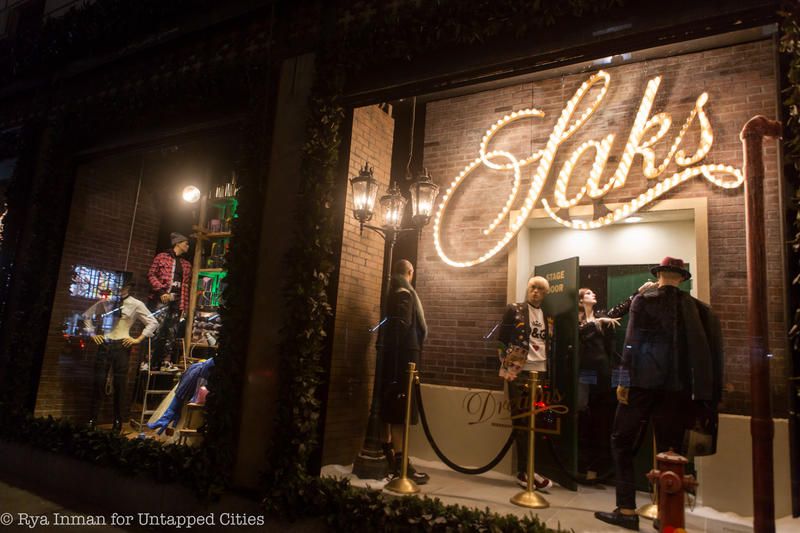
Saks Fifth Avenue has long been associated with innovation, offering much more than luxury goods and the latest trends. In addition to its expansive shoe section, it recently launched The Wellery, an entire floor dedicated to health and fitness, which includes a studio space reserved for rotating pop-up classes and exercise programs.
In fact, Saks’ history of innovation dates all the way back to the 1930s, when the men’s floor of the department housed an indoor ski slope that was powdered with Borax. There, customers could take lessons from professional Scandinavian instructors. A ski shop was eventually built around the slope, and winter trips were organized via train to nearby resorts. At one point, Saks also featured an indoor golf course.
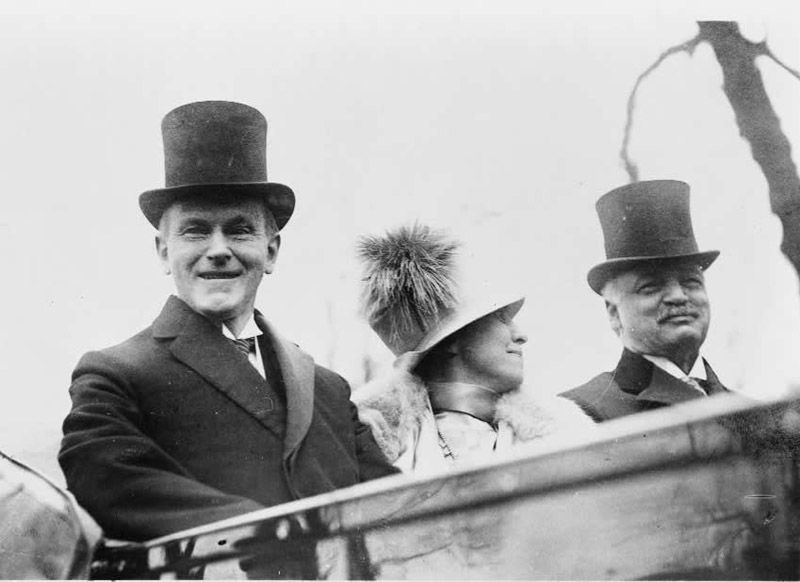
Calvin Coolidge. Photo from Library of Congress.
On September 15, 1924, Saks Fifth Avenue officially opened its doors at 9am, becoming the first large retail operation to exist in what was then primarily a residential district. In light of the prosperity of the Roaring Twenties, wealthy folks were eager to spend their money, and “shoppers in fur coats and pearls mobbed the sales floors” of Saks during its opening, reports The New Yorker.
The first package sent out that day was a silk top hat, which was delivered to President Calvin Coolidge at the White House; whether it was a purchase or a gift remains unknown. In addition, the first item to sell out was a silver pocket flask. (It was the Prohibition after all).
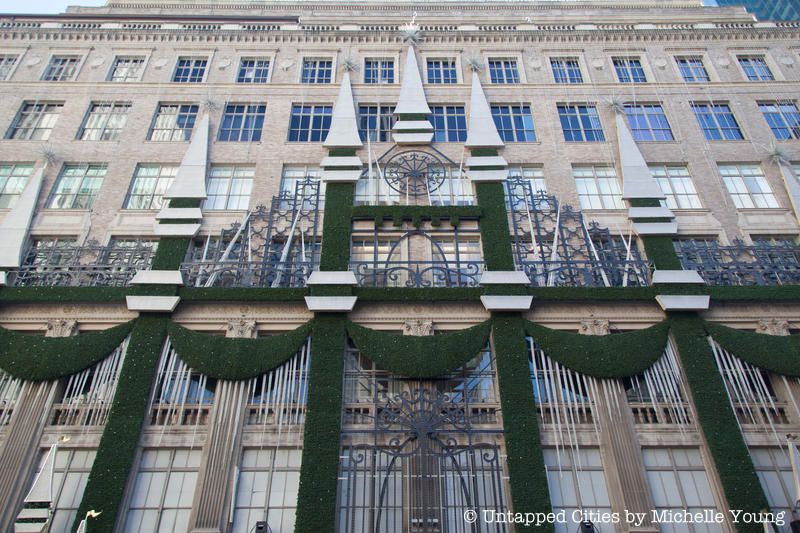
Saks Fifth Avenue celebrated its opening day with flashy window displays, featuring a $3,000 pigskin trunk, $1,000 raccoon coats, a chauffeur’s livery and “foot muffs” for automobile trips. The Prince of Wales was also rumored to be in the store, alongside the mobs of people that attended the launch.
According to newspaper reports, a stampede made its way to the men’s shop on the sixth floor as women flooded into the aisles to catch a quick glance of him. Unfortunately, the Prince of Wales was actually nowhere near the store at the time; the source of the rumor came from the fact that an English leather bag was reportedly shipped to him from the store.
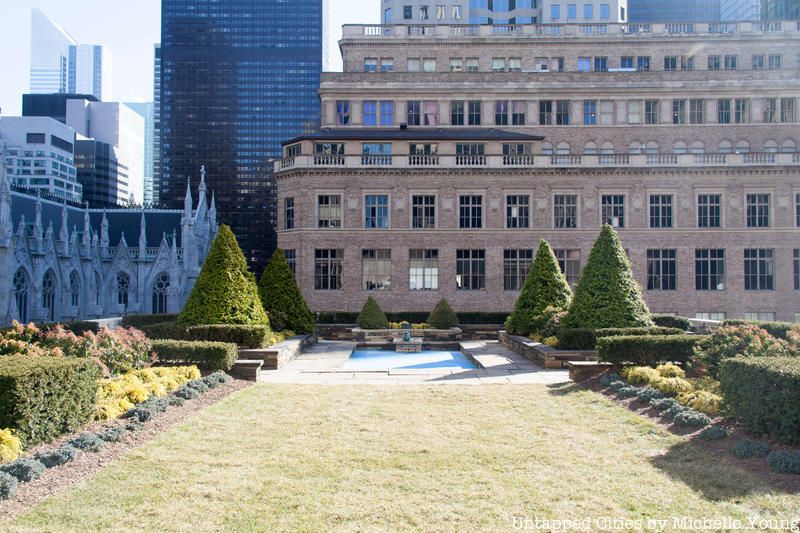
Built in 1922-24, Saks Fifth Avenue was designed by department store specialists Starrett & Van Vleck. The “neo-Renaissance style retail palazzo” was constructed with consideration to the conservative, architectural character of Fifth Avenue, and the modern requirements of a luxury retail shop.
At the time of its construction, Starrett & Van Vleck needed to adhere to New York’s zoning law, which mandated that the upper floors of the buildings above a certain height had to be progressively setback from their lot-lines; Saks Fifth Avenue became the first department store to comply with these requirements. Its setback stories, which begin on the seventh floor, were reserved for administrative offices.

Photo from Wikimedia Commons, cropped from original in Library of Congress.
Following his brother’s sudden death in 1927, Adam Gimbel became the president of Saks Fifth Avenue. Quite ironically, he was regarded as a sloppy dresser, but the store became his “child,” and he was driven to create an environment where his customers felt like guests.
“We want a store that gives the impression of entering a fine home,” said Gimbel.
To accomplish this mission, he offered the option of credit purchases, whereas other major stores (including Macy’s) were cash only. In addition, Gimbel brought in a leading Parisian coiffeur, who established a “bobbing salon” in the 1920s due to the widespread popularity of actress Louise Brooks’ famous bob cut. In fact, Saks Fifth Avenue is said to have brought the bob haircut to the United States.

Saks Fifth Avenue wasn’t just known for its luxury goods; it also outfitted members of the United States Olympic Ski Team and soldiers during WWII.
Because men were the only ones permitted to fight at the time, women took part in the war effort in other ways: some joined the Navy WAVES (also known as the Women’s Reserve), a division of the United States Navy that recruited women for voluntary emergency services. Among a number of other roles, women served as translators, interpreters and specialists in chemical warfare.
Their unique uniform, which incorporated feminine styles and included accessories like stockings, leather handbags and shoes, were sold by authorized retailers like Bloomingdales, Macy’s and Saks Fifth Avenue.
Some of the original military coats are reportedly up for sale on retail websites like eBay. Here’s a woman’s military uniform from 1945 and an Ike uniform jacket currently being sold for $499.00 (authenticity not guaranteed).
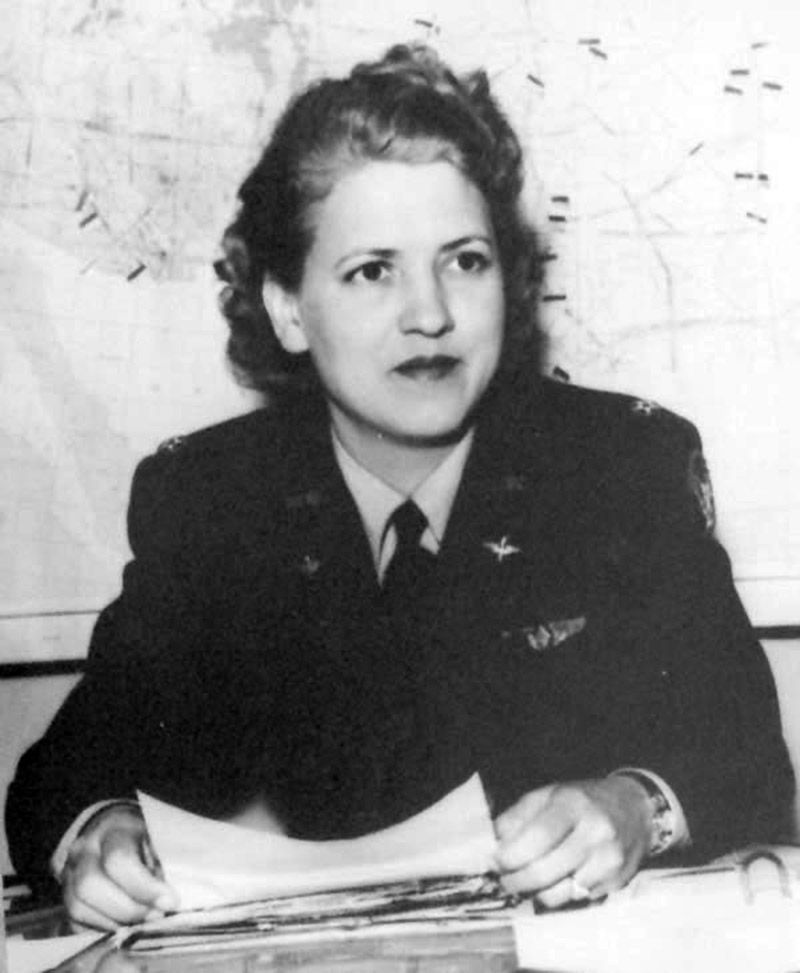
Photo from Wikimedia Commons
Considered to be one of the most gifted pilots of her generation, Jacqueline “Jackie” Cochran was a pioneer in American aviation and the first woman to break the sound barrier on May 18, 1953. (This is just one bullet point on a long list of “firsts” — she was the first woman be inducted into the Aviation Hall of Fame, the first woman to take off from an aircraft carrier…)
Prior to her historic career in aviation, however, she worked a number of odd jobs, including a gig as a cosmetic sales associate and hair stylist at Saks Fifth Avenue salon, Antoine’s.
It wasn’t until the early 1930s that she began taking flying lessons at Roosevelt Airfield, Long Island. “…when I paid for my first lesson, a beauty operator ceased to exist and an aviator was born,” Cochran stated. She learned how to fly in just three weeks and earned her commercial pilot’s license before the age of 30. Very shortly afterward, in 1938, she earned the title of the best female pilot in the United States.
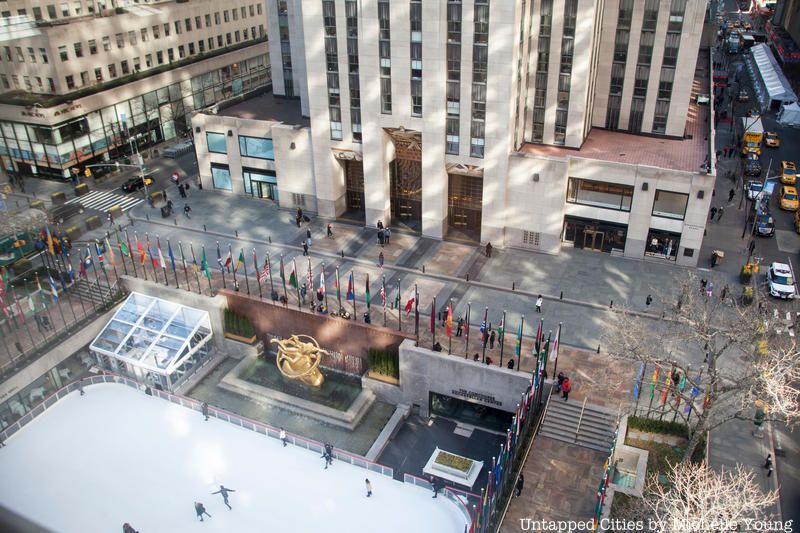
We’re big fans of tunnels, and even bigger fans of clandestine ones. Although we weren’t able to uncover much information about it, various sources make mention of a secret tunnel that once connected Saks Fifth Avenue to Rockefeller Plaza. Unfortunately, Saks publicist Katie Majeski tells amNewYork that it’s no longer active.
Next, check out 7 Secret NYC Tunnels You Probably Haven’t Heard Of.

We came across these planters engraved with “Saks & Company” far, far away from the flagship store on 5th Avenue. In fact, they were in Queens on 36th Avenue and 33rd Street, between Long Island City and Astoria. Since the planters say Saks & Company and not “Saks Fifth Avenue” these make these planters pre-1924, when the company name was changed.
So what are they doing in Queens? They may have a similar story to the 34th Street Partnership planters that are in Red Hook. In that case, the partnership donated the planters to a property owner in Red Hook. As for the Saks & Company ones, looks like they’ve been moved across the street since the April 2012 Google Street view below, which shows them nicely lined up on the street. Now, they’re haphazardly placed next to a construction site, some also have graffiti tags on them.
Whatever its origins, its a fun incongruous case of reuse–and one that seems to have precedent.
Next, check out NYC’s Holiday Department Store Windows Via Google Maps (Saks, Macy’s, Bloomingdale’s).
Subscribe to our newsletter